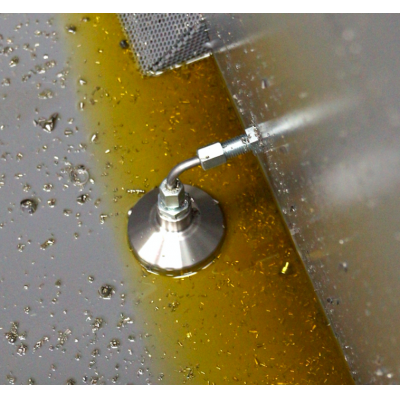The Renishaw Group currently has more than 70 offices in 35 countries, with over 4,000 employees, of which 2,700 people are employed within the UK. The majority of the company's R&D and manufacturing is carried out in the UK. Up until the expansion of its Miskin facility, near Cardiff in South Wales, in 2012, theStonehouse, Gloucestershire facility was the company’s main machining operation in the UK.
Today, as part of the business risk management strategy the manufacturing sites mirror each other such that any catastrophes or natural disasters may disrupt, but will not halt, production. Milled and turned parts up to 500 mm3 are necessarily complex and run in batches of between three and tens of thousands. A variety of machine tools are used to support the around-the-clock manufacturing operation, with 25 machines in RAMTIC (Renishaw’s Automated Milling, Turning andInspection Centre) cells equipped with 25,000 rpm spindles for aluminium parts or 12,000 rpm spindles for difficult-to-machine materials such as stainless steel. An extremely efficient system, it takes just three of the 160 staff on site to run all these machines.
As well as efficiency, the company is always considering its environmental impact and a project that started on a Mazak Integrex i300 at the Miskin site has since been rolled out in Stonehouse. Engineering Group Leader, Jon Davis, recalls: “The machine was running for 20 hours and gathering water-miscible coolant in the base of the swarf bin. So we fitted a Wogaard Coolant Saver and that solved the problem. We then thought we could use this simple effective solution elsewhere.”
His team’s focus fell on the Citizen multi-axis CNC Swiss sliding headstock lathes Renishaw operates for its turned parts. Machining aluminium, brass or stainless steel, the lathes use a low viscosity neat oil coolant that was being dragged into the bins by the swarf. “Operators were replenishing the oil on a regular basis, which isboth expensive, time consuming and has potential hazards associated with it,” Jon Davis explains.
“We tested the Wogaard Coolant Saver on the neat oil and it worked extremely well, and now all the Citizen lathes have been upgraded with the units. As we have to exchange and empty the swarf bins frequently our engineering team devised a quick fit connection system so the Coolant Saver head remains fitted to the base of the bin with external stainless steel piping. The design allows it to be simply uncoupled from the Venturi unit on the machine’s coolant pump that generates the vacuum requiredto extract the coolant and return it to the machine tool’s sump.”
While the engineering team at Stonehouse does not have exact savings in terms of the litres of neat oil saved, the positive impact of the Wogaard system is appreciated in a number of areas. As Jon Davis points out: “We have significantly reduced thetime wasted topping up the oil in the sump of the machines, negated the risk of neat oil being spilt or leaking onto the shop floor and saved our labourers’ time vacuuming out the oil from the skips.”
Although all the lathes are supplied by Citizen, the specifications differ to suit the parts produced. This means the fitting of the Coolant Saver for each type required some engineering input. Now they have all been completed the process has been documented so the Wogaard units can be fitted to the turning cells acrossRenishaw’s other manufacturing facilities.
And what of the machine tools with soluble oil, where the project started? “Thesemachine tools are part of the plan, we have already purchased the Wogaard units we just need to go round all the machines to fit them. With around two skips per shift required for each machine we will follow a similar quick coupling design, and wealready know the Coolant Saver to be a proven solution,” Jon Davis concludes.
